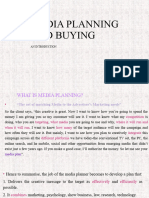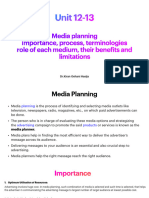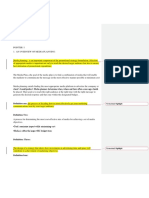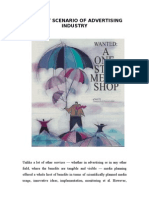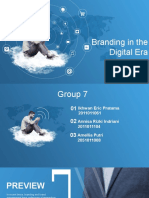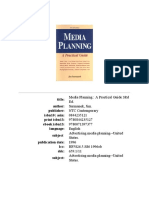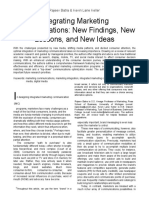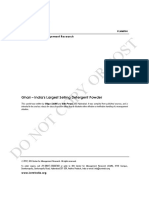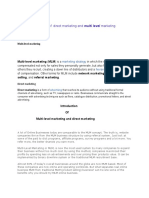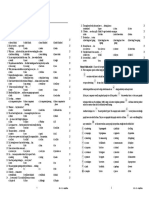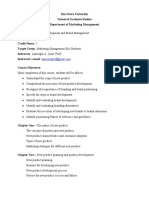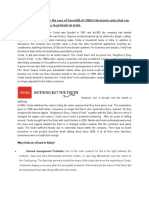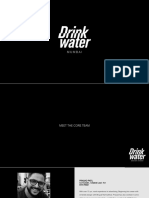Writing Prompt
Write an article on how media planning & buying is changing from print to integrated media.
THE PARADIGM SHIFT: MEDIA PLANNING AND BUYING TRANSITIONS FROM PRINT TO
INTEGRATED MEDIA
In the dynamic landscape of advertising, the realm of media planning and buying is undergoing a
significant transformation, propelled by the unstoppable tide of technological advancements and
changing consumer behaviours. One of the most noteworthy shifts is the move away from traditional
print media towards a more holistic approach known as integrated media planning and buying. This
evolution reflects the industry's adaptability to the digital age and the need for brands to connect
with audiences across diverse channels. Here's a closer look at how media planning and buying are
undergoing a metamorphosis, with a move from print to integrated media.
The decline of Print Media
Print media, once the dominant force in advertising, is experiencing a decline in relevance as
consumers increasingly turn to digital platforms for information and entertainment. Several
significant reasons contributed to the fall, includes-
Shrinking circulation: Newspapers and magazines, while still influential, are seeing a decline
in readership and circulation numbers. Traditional print struggles to keep pace with the
digital alternatives.
Shifting consumer preferences: Consumers prefer digital platforms for news and
entertainment. Also, online content's accessibility is steering audiences away from print.
Limitations in audience reach: Print's reach is limited by geography and demographics.
Advertisers seek broader digital platforms for a wider audience.
Interactivity and real-time engagement: Print lacks the interactive and real-time
engagement of digital channels. Advertisers crave platforms allowing instant connection and
feedback.
Advertisers are acknowledging these limitations of print media prompting a strategic shift towards
the broader and more dynamic landscape of digital advertising.
The rise of Integrated Media
Integrated media planning and buying represent a strategic departure from the singular focus on
print towards a comprehensive, multi-channel approach. This methodology leverages a combination
of traditional and digital channels, such as television, radio, social media, search engines, and other
online platforms, to create a cohesive and immersive brand experience. The goal is to meet
consumers where they are and deliver a consistent message across various touchpoints. Some of the
crucial factors contributing to this media planning and buying shift from print to integrated media
includes-
Digital dominance: The advent of digital platforms has redefined the advertising game. Print
media's geographical and temporal limitations are being superseded by the boundless reach
of online channels. Once confined to the limited space of a print ad, advertisers can now
� harness the expansive reach of digital platforms. Social media, search engines, and websites
provide a canvas for interactive and visually engaging campaigns, reaching audiences far
beyond the constraints of traditional print.
Data-driven decision making: One of the driving forces behind the shift to integrated media
is the rise of data analytics. Unlike traditional print advertising, digital channels offer a wealth
of data that can be analysed to understand audience behaviour, preferences and
demographics. This wealth of information enables advertisers to make informed decisions,
target specific audience segments and optimize campaigns in real-time. Data-driven insights
empower media planners to allocate budgets more effectively, ensuring a higher return on
investment.
Real-time engagement and feedback: Integrated media planning facilitates real-time
engagement with consumers. Unlike the delayed feedback loops of print media, integrated
media provides advertisers with real-time insights. This agility allows for swift adjustments
and optimization of campaigns, an invaluable feature absent in the rigid timelines of print.
Advertisers can now track metrics such as click-through rates, impressions, and conversions
in real-time. This not only enables quick adaptations to enhance campaign effectiveness but
also fosters a culture of continuous improvement throughout the campaign's lifecycle.
Social media as a powerhouse: Social media has emerged as a central player in the
integrated media landscape. It's not just a channel for advertising; it's a dynamic space for
brand-consumer interaction, offering unique opportunities for engagement and community
building. Platforms like Instagram, Facebook and Twitter provide advertisers with the ability
to create conversations, respond to user comments and build a community around their
brand. Social media is not just a broadcast channel; it's a two-way street that fosters
relationships and brand loyalty.
Cohesive brand narratives: Integrated media planning emphasizes the importance of
maintaining a consistent brand narrative across diverse channels. This ensures that the
brand's identity remains cohesive, regardless of the platform through which it's
communicated. A consumer encountering a brand on various platforms should experience a
seamless narrative. Whether it's through a video on YouTube, a sponsored post on
Instagram, or a display ad on a website, the messaging and imagery should align to create a
unified brand experience.
Amidst this transformative landscape, MudraMax, an integral part of the DDB Mudra Group, led by
the strategic vision of Rammohan Sundaram, President of Integrated Media, DDB Mudra Group
stands as torchbearers in spearheading the industry's shift from traditional print to integrated media
planning and buying. Recognizing the limitations of print media, MudraMax strategically embraces
the boundless opportunities presented by digital platforms, emphasizing data-driven decision-
making, real-time engagement, and cohesive brand narratives. This shift reflects their commitment
to providing comprehensive and effective advertising solutions, showcasing a forward-thinking
approach that aligns seamlessly with the ever-changing landscape of consumer behaviours. Under
Rammohan Sundaram's leadership, they showcase a commitment to staying ahead, delivering
impactful campaigns, and redefining media strategies for a more connected and immersive brand
experience.
References:
https://www.webfx.com/digital-marketing/learn/traditional-media-vs-new-media/
�https://campaignme.com/end-agency-media-planning-buying-will-soon-become-fully-automated-
says-c1xs-rammohan-sundaram/
https://www.whistlingwoods.net/the-evolution-of-media-from-print-to-digital/
https://www.pewresearch.org/short-reads/2023/11/28/audiences-are-declining-for-traditional-
news-media-in-the-us-with-some-exceptions/
https://silverlinecrm.com/blog/media/how-technology-has-changed-the-media-industry-and-whats-
next/














